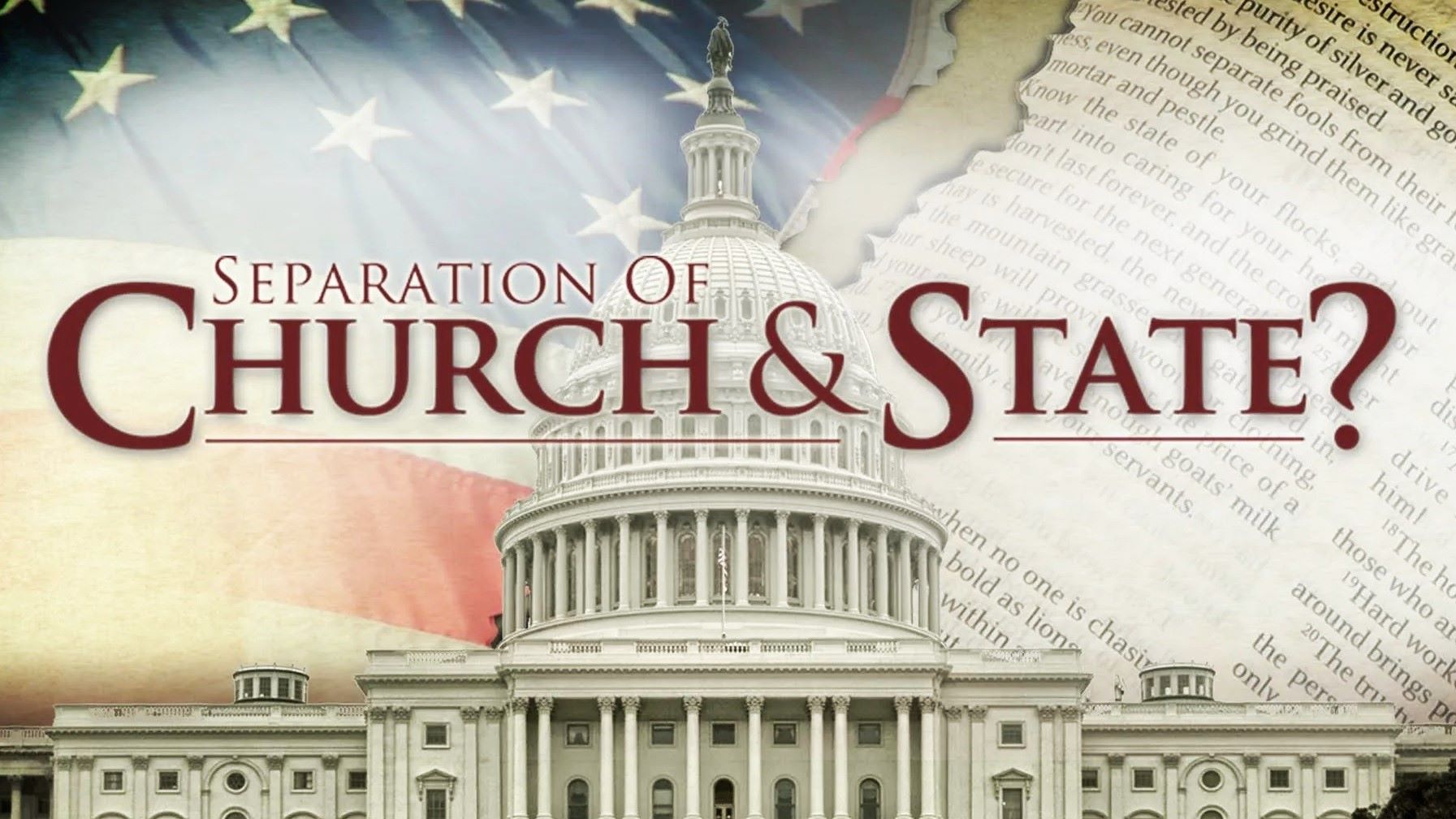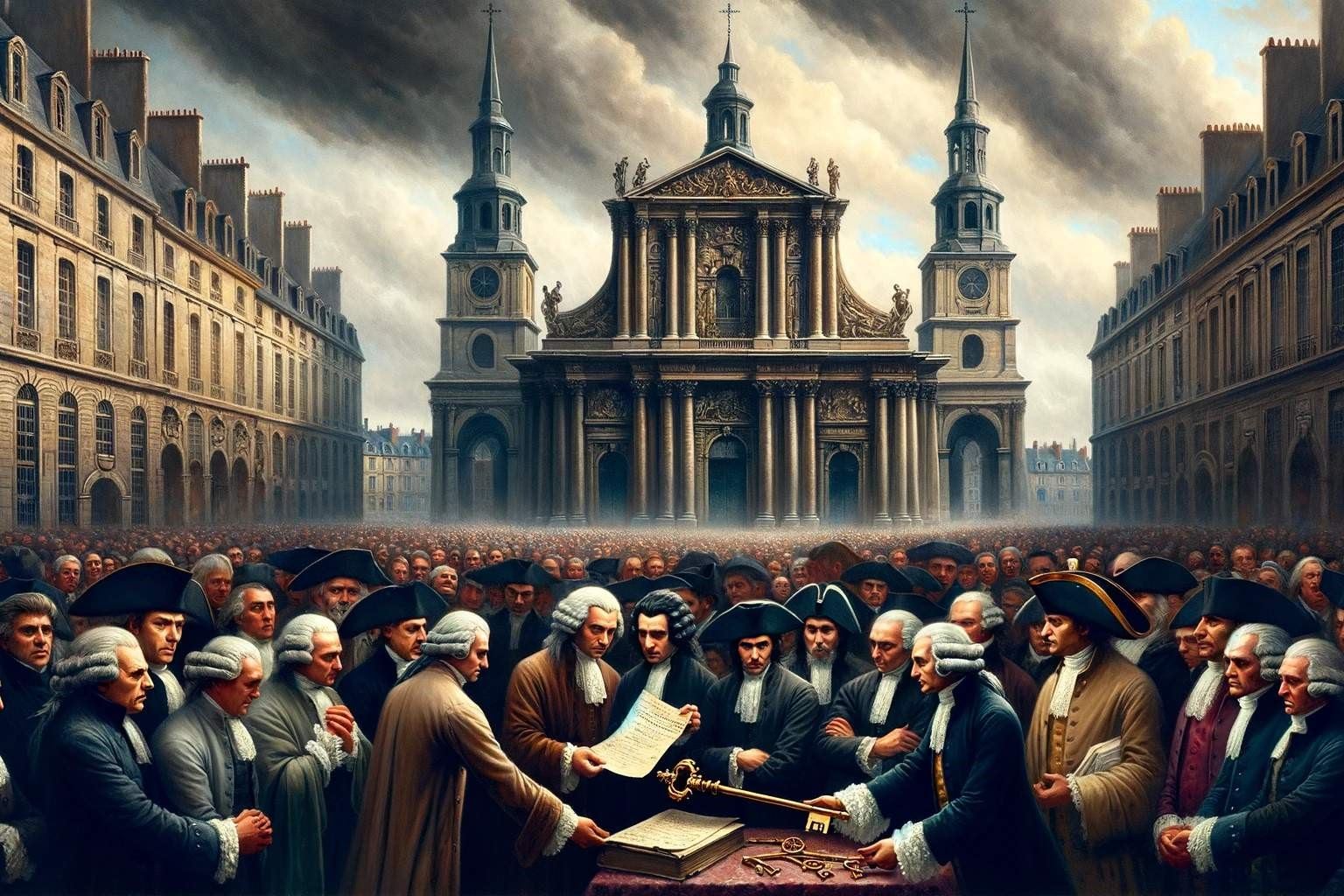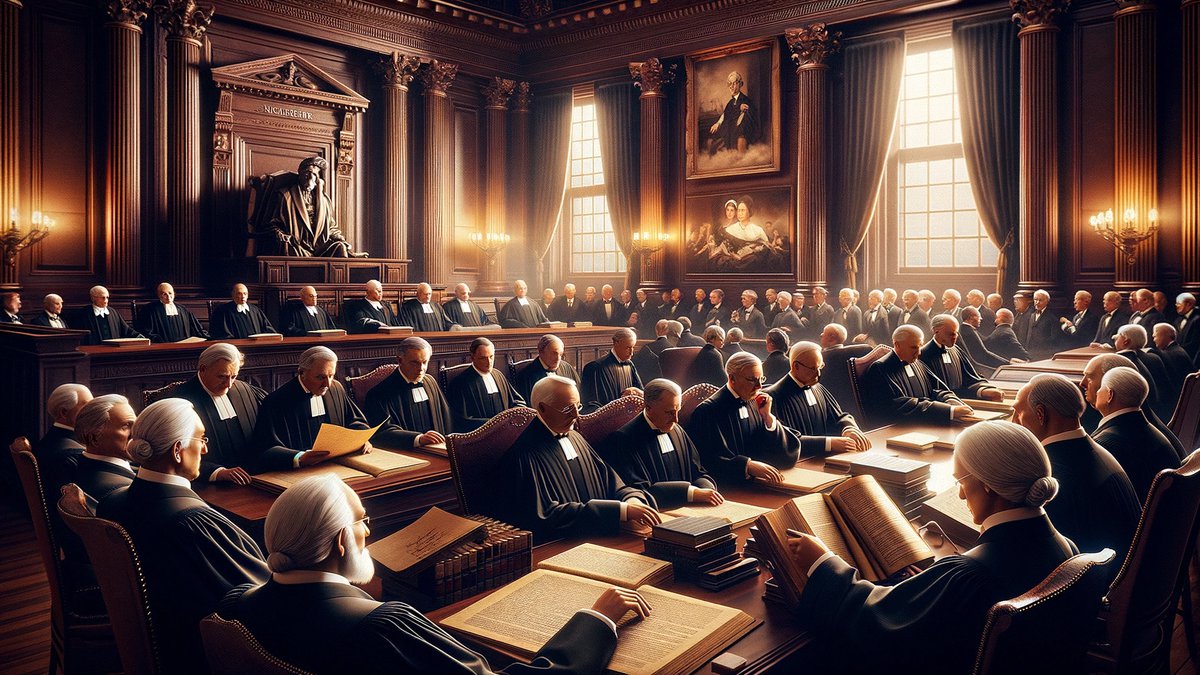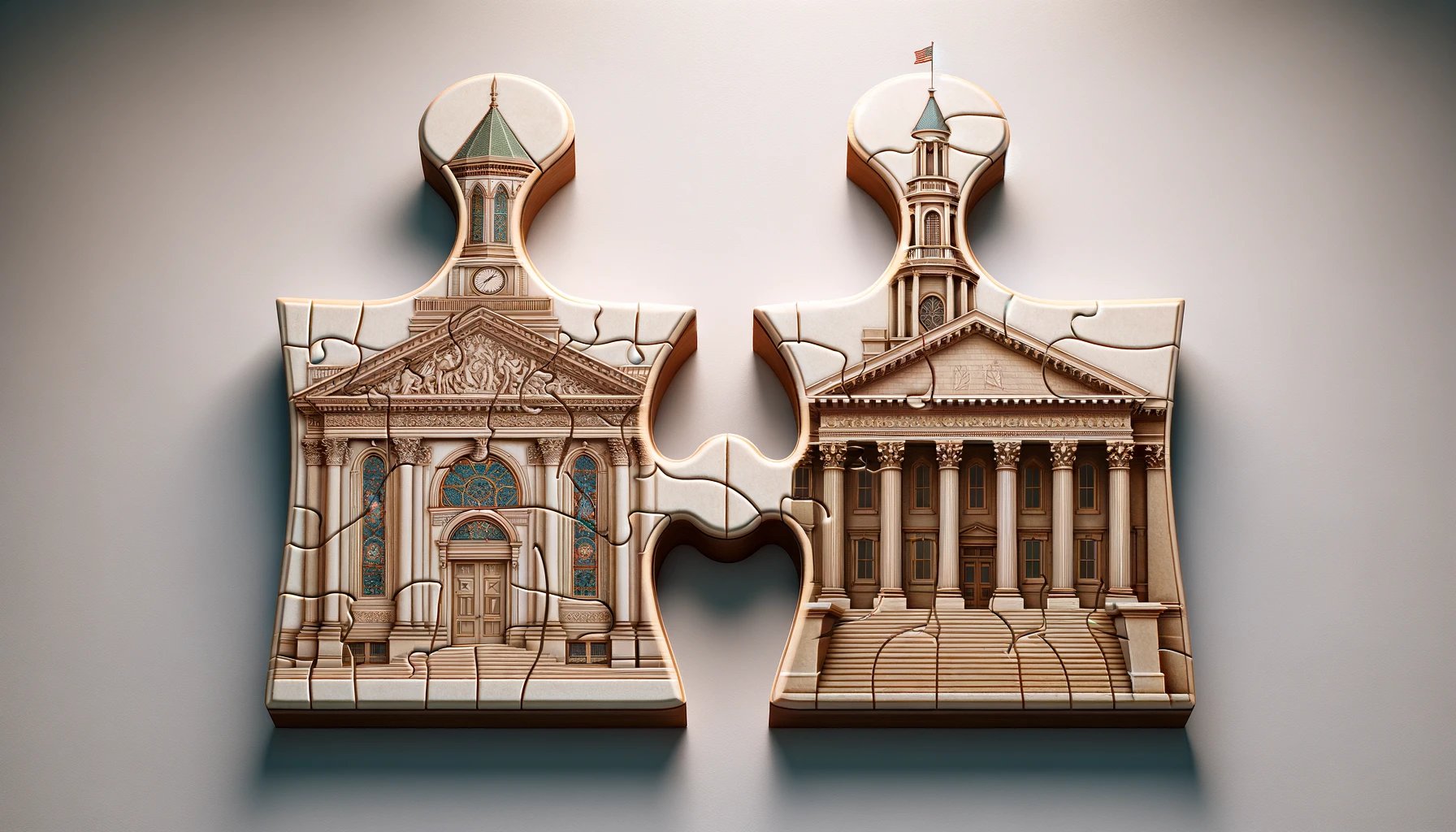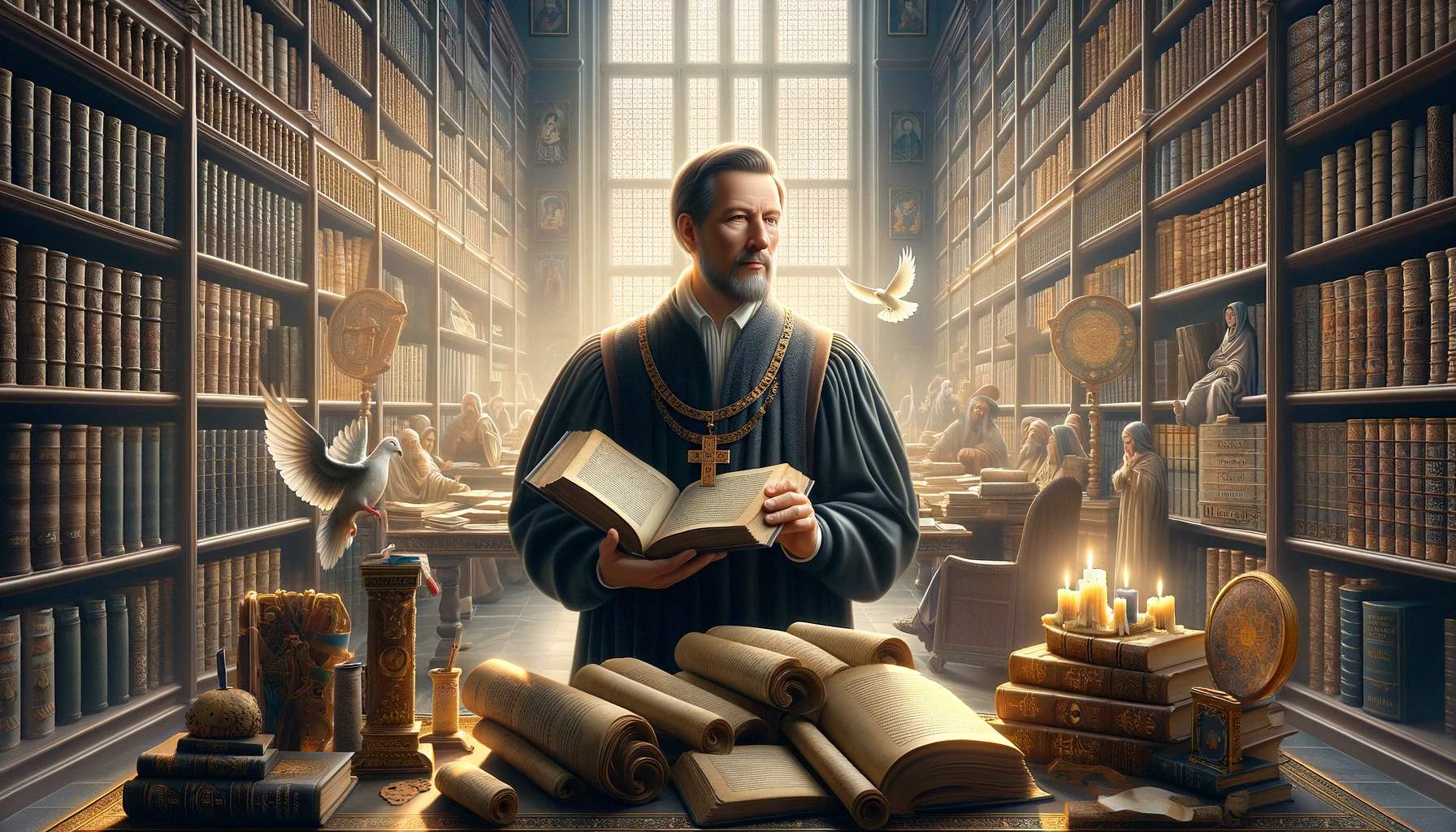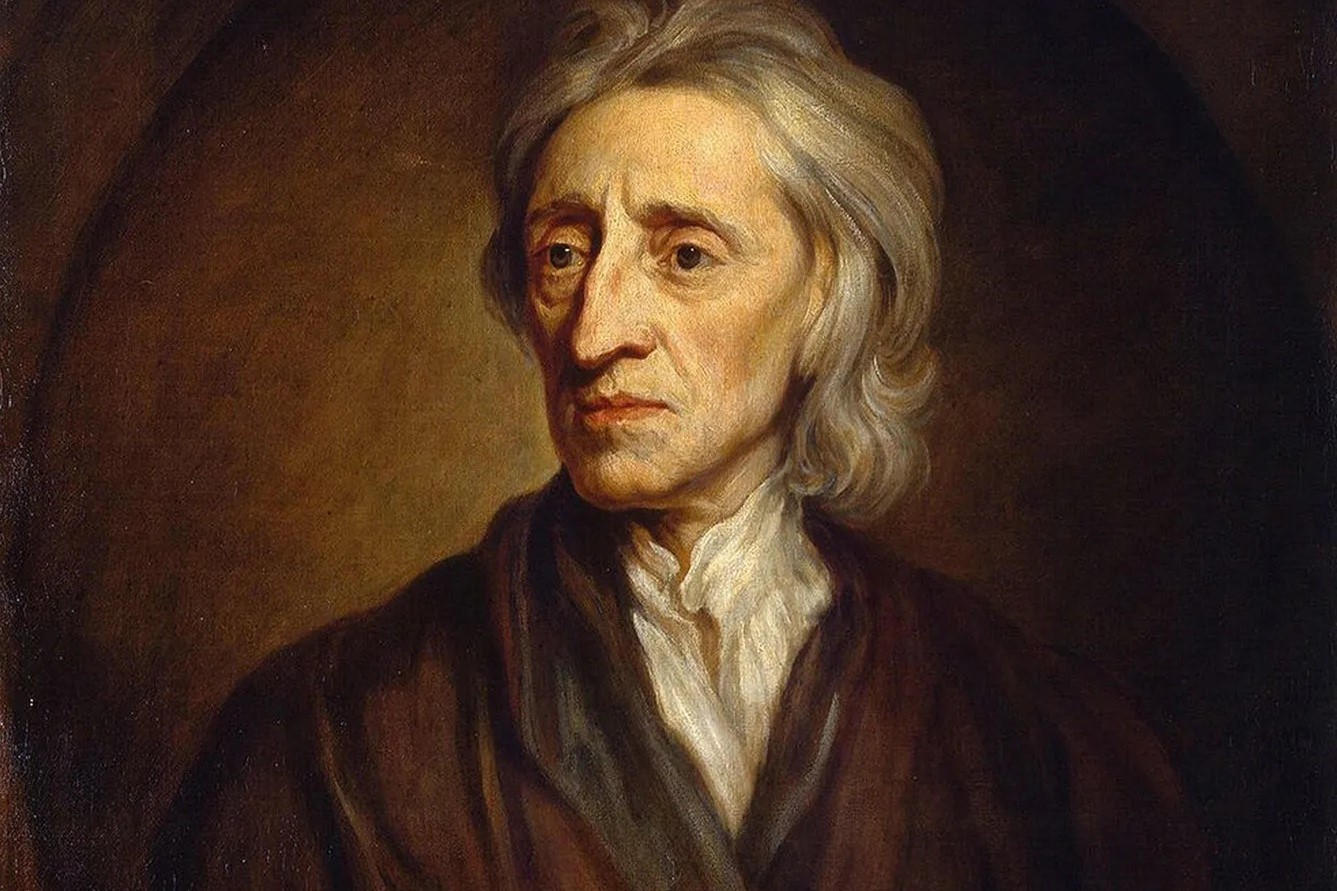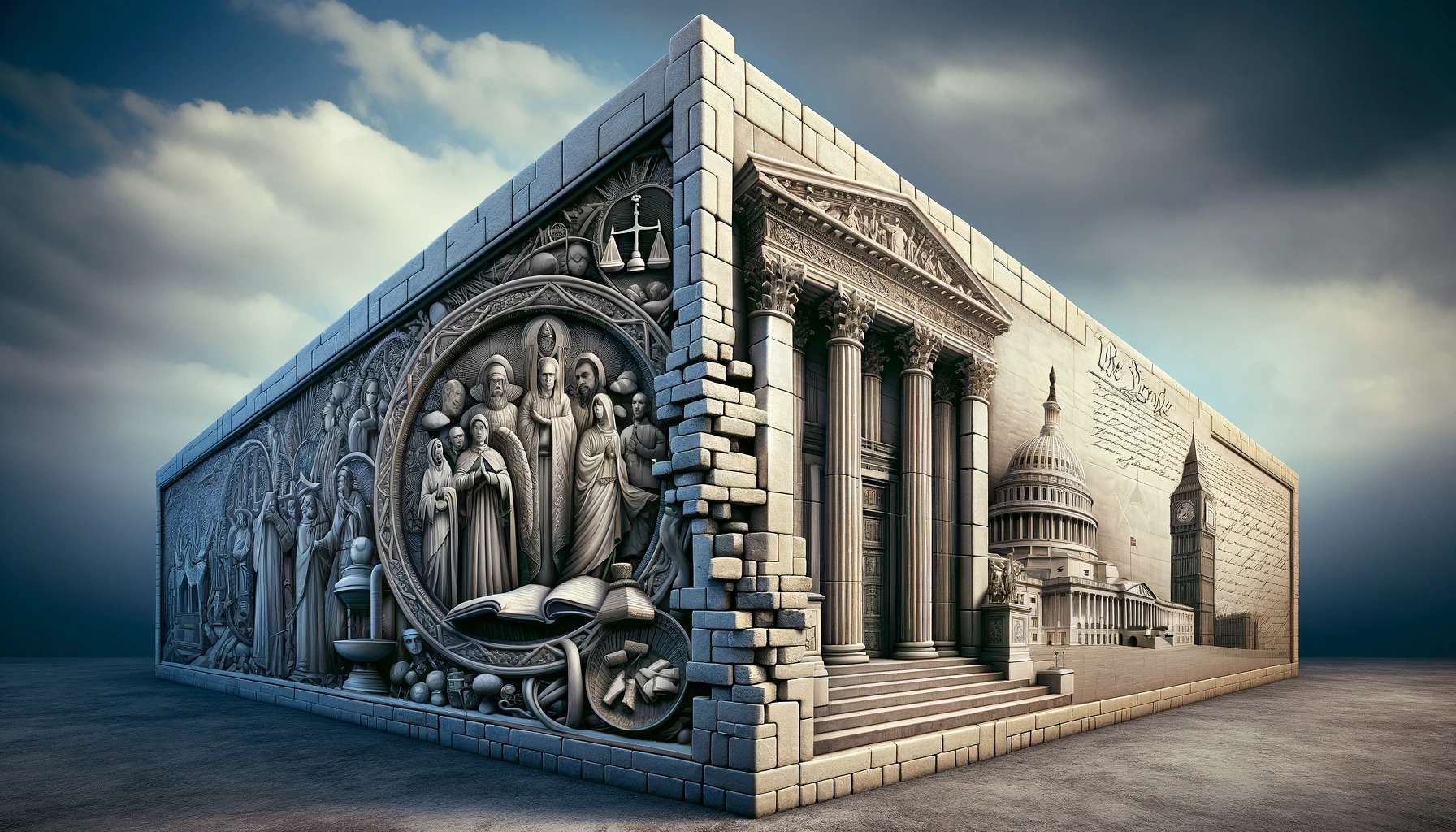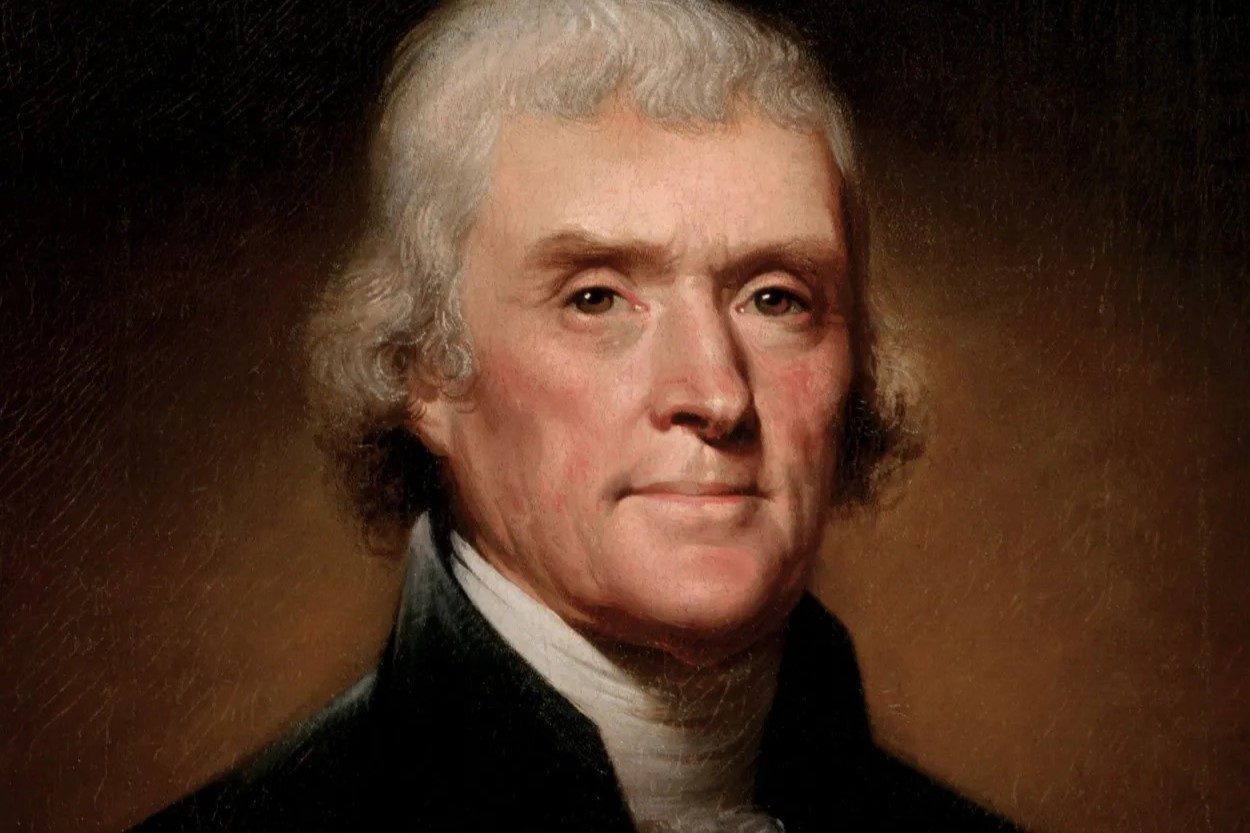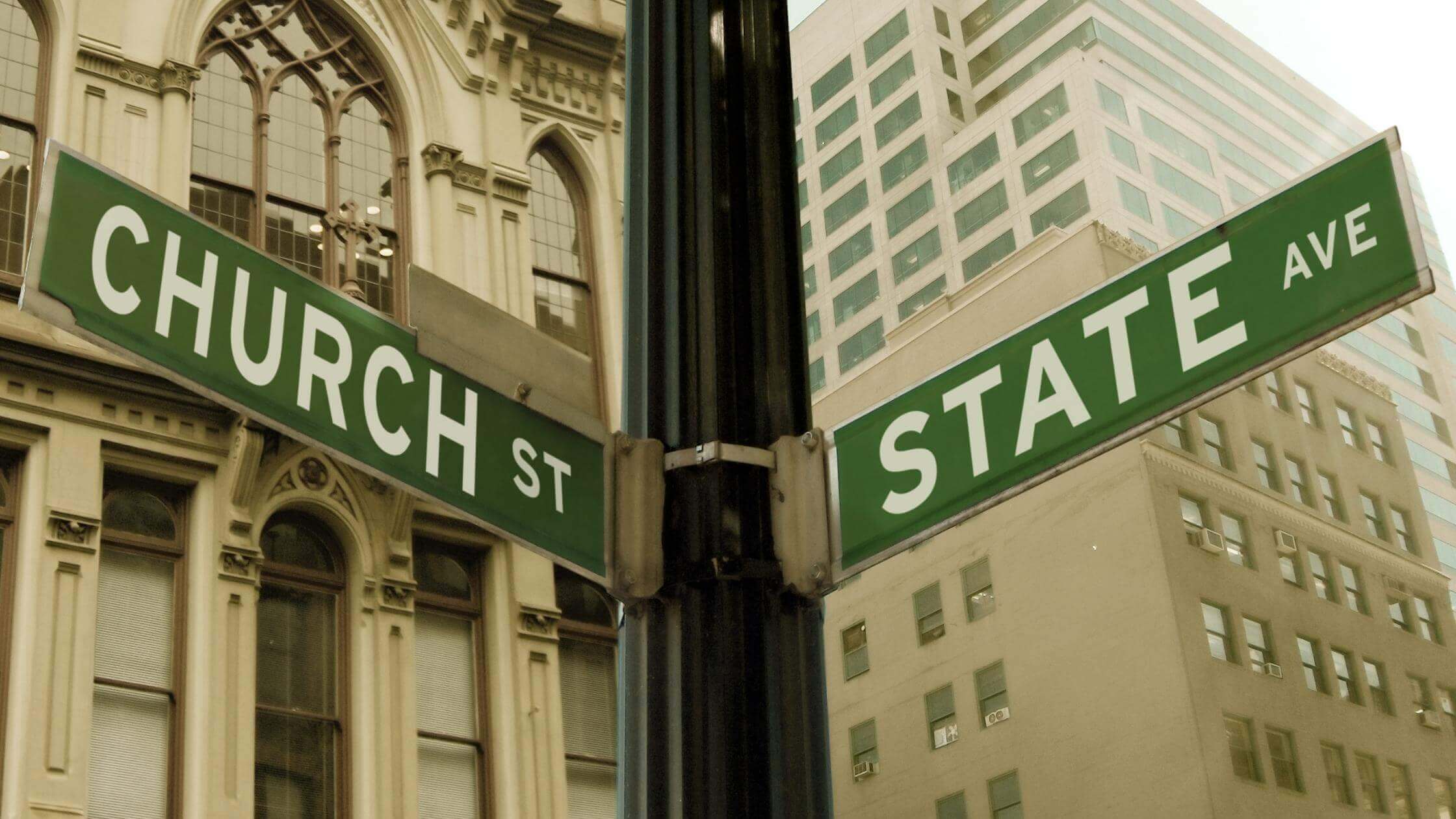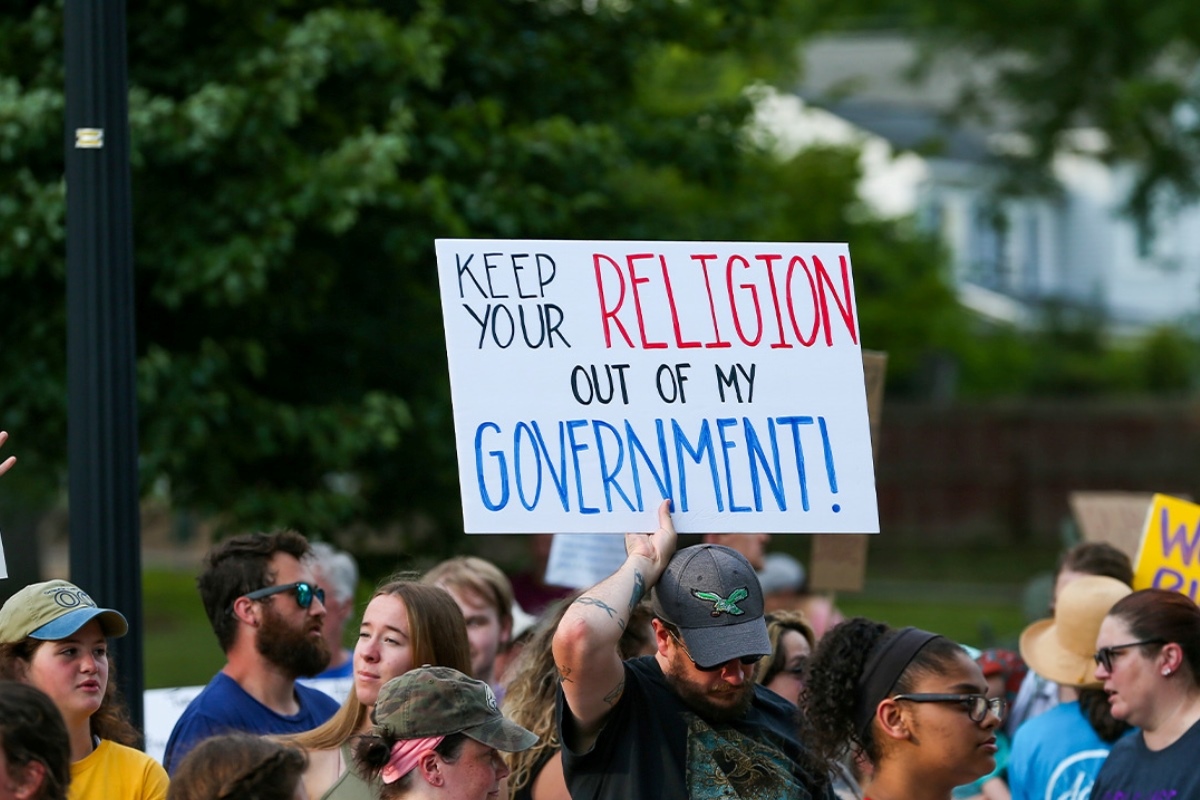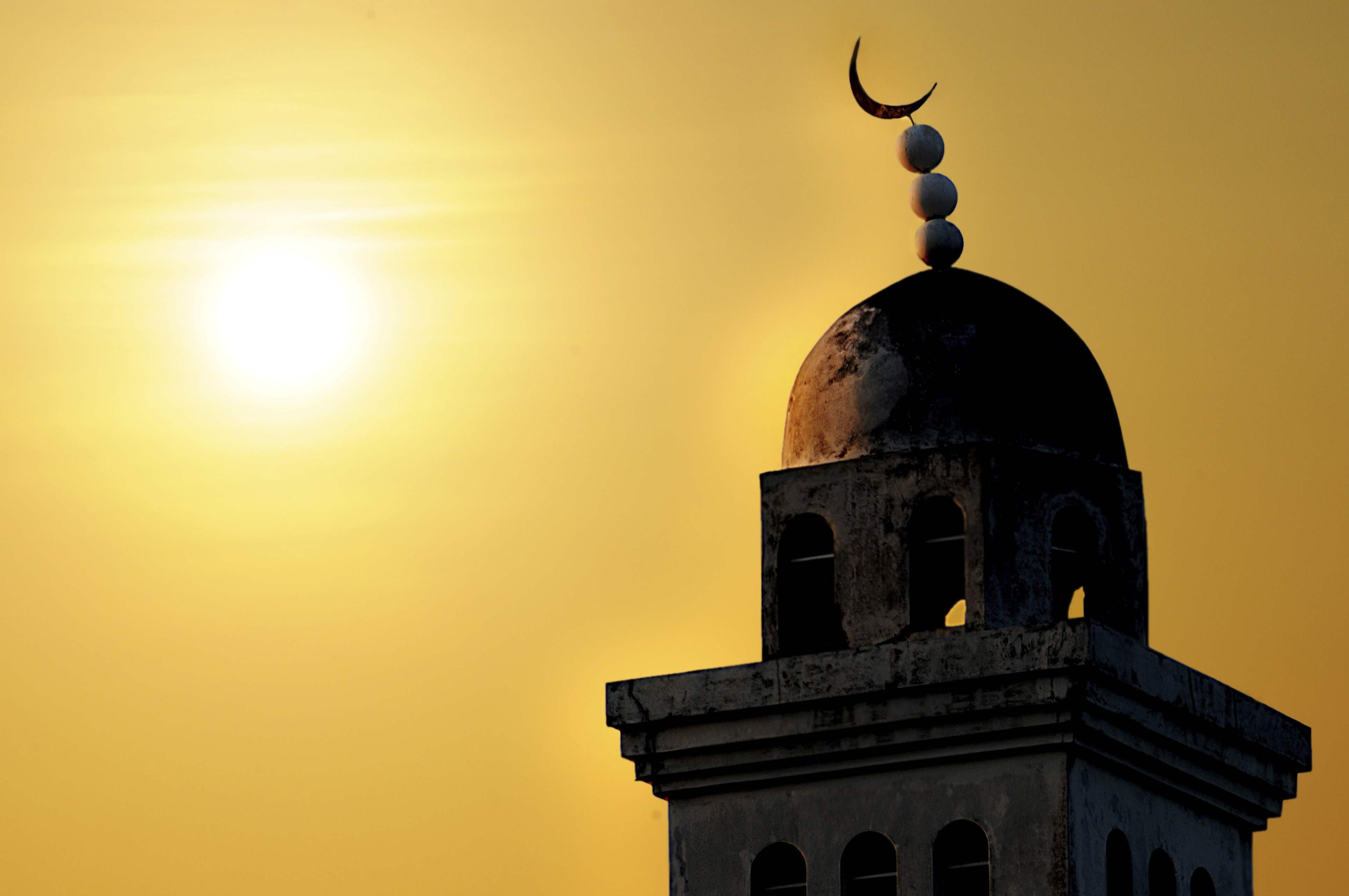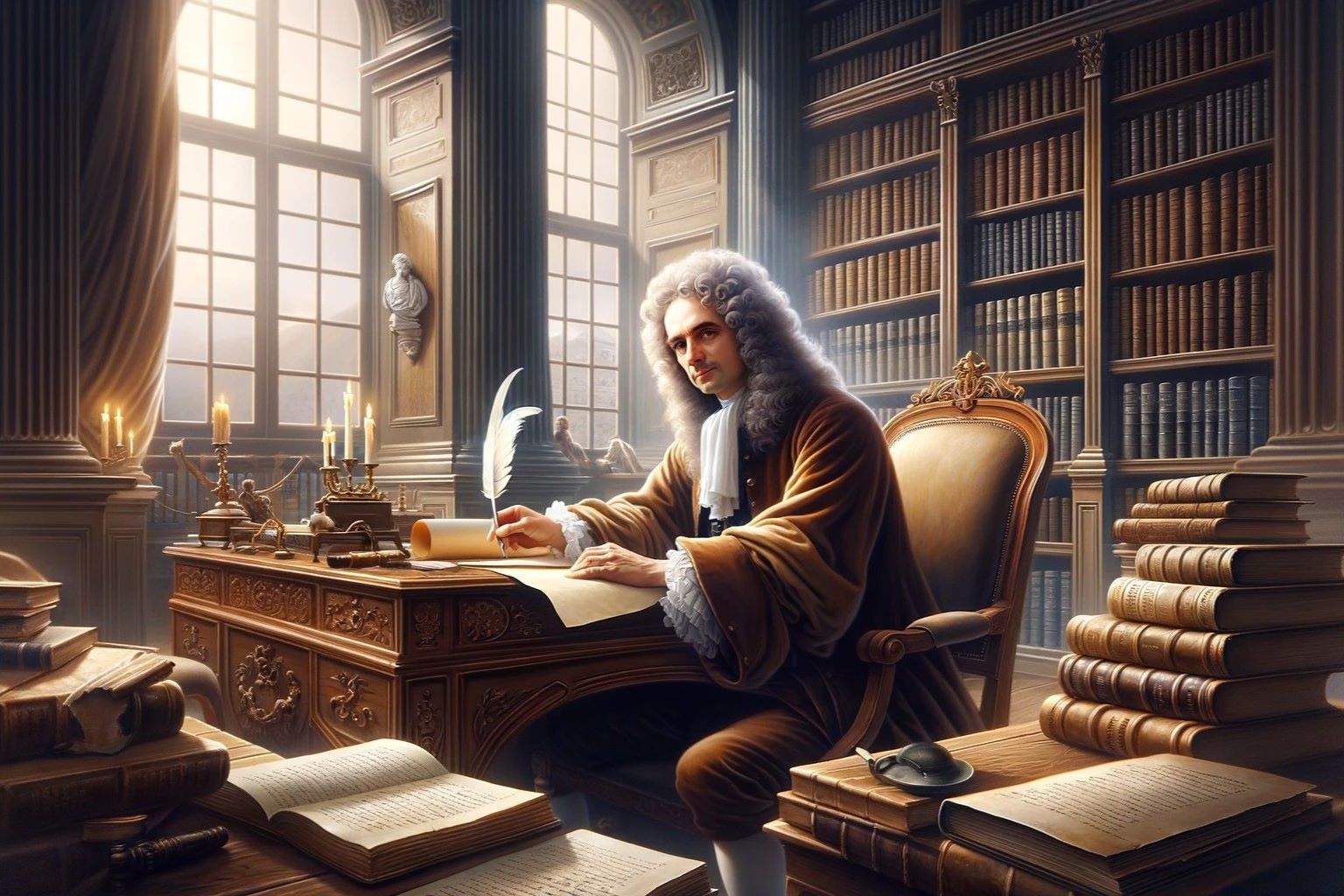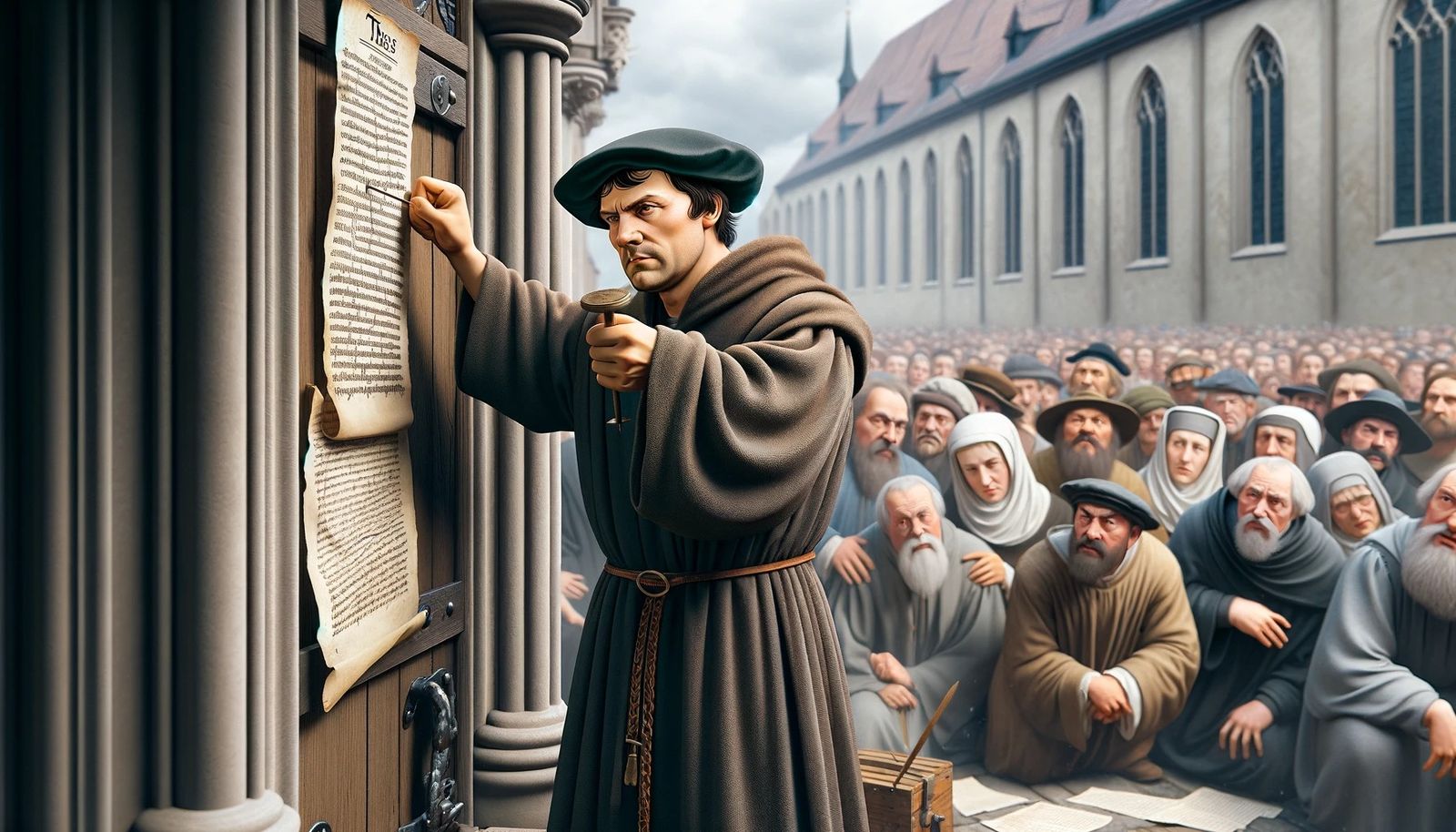Home>Theology and Spirituality>When Did Separation Of Church And State Come About


Theology and Spirituality
When Did Separation Of Church And State Come About
Published: February 11, 2024
Ericka Andersen, an editor at Christian.net, expertly merges digital strategy with content creation, focusing on faith and societal issues. Her communication skills enhance the platform's engaging narratives, fostering meaningful dialogue on belief's impact on society.
Learn about the history of the separation of church and state and its impact on theology and spirituality. Explore the origins and evolution of this important concept.
(Many of the links in this article redirect to a specific reviewed product. Your purchase of these products through affiliate links helps to generate commission for Christian.net, at no extra cost. Learn more)
Table of Contents
Introduction
The concept of the separation of church and state has been a topic of significant debate and discussion throughout history. It encompasses the idea that the government and religious institutions should operate independently of each other, with neither exerting control or influence over the other. This principle has played a pivotal role in shaping the political and religious landscapes of various societies, sparking profound philosophical and legal deliberations.
The notion of separating the realms of religion and governance has been a complex and multifaceted issue, deeply intertwined with the evolution of human civilization. It has been influenced by a myriad of factors, including religious beliefs, philosophical ideologies, historical events, and legal frameworks. Understanding the origins and development of the separation of church and state requires delving into the annals of history, exploring the interplay between religious authority and political power.
Throughout the ages, the relationship between religious institutions and ruling authorities has been characterized by a dynamic interplay of cooperation, conflict, and negotiation. The early history of church and state reveals a landscape where religious institutions often wielded significant influence over political affairs, and rulers sought to legitimize their authority through religious sanction. This intertwining of religious and political power laid the groundwork for the eventual emergence of the concept of the separation of church and state.
As societies progressed and underwent intellectual and philosophical transformations, the Enlightenment era ushered in a new wave of thought that challenged traditional notions of religious authority and divine right. The rise of secularism and the emphasis on reason and individual rights played a pivotal role in reshaping the relationship between religion and governance, laying the groundwork for the eventual codification of the separation of church and state in legal and constitutional frameworks.
The American Revolution stands as a watershed moment in the history of the separation of church and state, as it led to the enshrinement of religious freedom and the prohibition of the establishment of a state religion in the United States. The First Amendment of the U.S. Constitution, with its clauses pertaining to religious freedom and the prohibition of religious establishment, solidified the principle of separation of church and state as a cornerstone of American governance.
The evolution of this principle has not been without challenges and controversies, as debates continue to unfold regarding the extent and scope of the separation of church and state in modern societies. These discussions encompass a wide array of issues, including the display of religious symbols in public spaces, the teaching of religious concepts in educational institutions, and the accommodation of religious practices within the framework of secular governance.
As we navigate the complexities of the modern world, the concept of the separation of church and state remains a focal point of legal, political, and ethical discourse. Its historical roots, philosophical underpinnings, and contemporary implications continue to shape the dynamics of religious freedom, governance, and societal harmony, making it a subject of enduring relevance and significance.
The journey to comprehend the intricacies of the separation of church and state invites us to embark on a thought-provoking exploration of history, philosophy, law, and the human experience, shedding light on the profound and enduring impact of this fundamental principle on the fabric of society.
Early History of Church and State
The early history of church and state is a tapestry woven with the threads of power, authority, and religious influence. In ancient civilizations, the intertwining of religious institutions and ruling authorities was a prevalent and defining characteristic of governance. Theocratic systems, where religious leaders held sway over both spiritual and temporal matters, were commonplace in societies such as ancient Egypt, Mesopotamia, and the Roman Empire.
In these early civilizations, the authority of rulers was often intertwined with divine legitimacy, with monarchs and emperors claiming to rule by the will of the gods. Religious rituals, ceremonies, and the patronage of temples were integral to the maintenance of social order and the assertion of political authority. The close association between religious and political power underscored the interconnectedness of church and state, shaping the social, legal, and moral fabric of these ancient societies.
The influence of religious institutions extended beyond matters of faith and worship, permeating various facets of public life, including law, governance, education, and social customs. Priests and religious leaders often held positions of significant influence, serving as advisors to rulers and arbiters of moral and ethical conduct. Temples and religious edifices stood as symbols of both spiritual devotion and political authority, embodying the fusion of religious and state power.
As societies evolved and encountered cultural and intellectual crosscurrents, the relationship between church and state underwent transformations. The rise of monotheistic religions, such as Christianity and Islam, introduced new dynamics to the interplay between religious authority and political governance. The establishment of ecclesiastical hierarchies and the codification of religious laws further solidified the influence of religious institutions on matters of state and society.
The early history of church and state reflects a landscape where the boundaries between religious and political authority were often blurred, with each realm exerting influence on the other. The complexities of this relationship laid the groundwork for the eventual emergence of philosophical and legal frameworks advocating for the separation of church and state, marking a pivotal shift in the dynamics of governance and religious freedom.
The historical trajectory of the early relationship between church and state serves as a compelling narrative, illuminating the intricate interplay of power, belief, and societal organization. It provides a foundational understanding of the evolution of the principle of the separation of church and state, offering insights into the enduring legacy of this fundamental concept in shaping the governance and moral compass of human societies.
The Enlightenment and the Rise of Secularism
The Enlightenment, a transformative intellectual movement that swept across Europe in the 17th and 18th centuries, heralded a profound shift in the prevailing attitudes towards religion, governance, and human knowledge. At its core, the Enlightenment championed the ideals of reason, individualism, and empirical inquiry, challenging traditional sources of authority and advocating for the primacy of human intellect in shaping societal progress.
Central to the Enlightenment was the rise of secularism, a philosophical stance that emphasized the separation of religious institutions from the domains of governance and public life. This paradigm shift marked a departure from the entrenched influence of religious dogma on matters of politics, law, and social organization, paving the way for the assertion of individual freedoms and the pursuit of knowledge independent of religious constraints.
Key Enlightenment thinkers, such as Voltaire, John Locke, and Denis Diderot, espoused ideas that questioned the divine right of monarchs, critiqued religious intolerance, and championed the principles of religious tolerance and freedom of thought. Their writings and treatises laid the groundwork for the emergence of secular governance and the codification of laws that safeguarded the rights of individuals to hold diverse religious beliefs or none at all.
The Enlightenment's emphasis on rational inquiry and the pursuit of knowledge through empirical observation engendered a climate conducive to scientific and philosophical advancements. This intellectual ferment contributed to the erosion of the absolute authority of religious institutions, as empirical evidence and reasoned discourse began to supersede traditional religious dogmas as the arbiters of truth and understanding.
The rise of secularism during the Enlightenment era also fostered the development of constitutional frameworks that enshrined the separation of church and state as a fundamental principle of governance. The United States, in particular, drew inspiration from Enlightenment ideals in crafting its Constitution, which included provisions prohibiting the establishment of a state religion and guaranteeing the free exercise of religion.
The Enlightenment's legacy as a catalyst for the rise of secularism endures as a testament to the enduring impact of intellectual and philosophical movements on the evolution of societal norms and governance. Its emphasis on reason, individual rights, and the separation of religious and political authority continues to shape contemporary debates on religious freedom, ethical governance, and the pursuit of knowledge in an ever-changing world.
The Enlightenment's advocacy for the separation of church and state stands as a testament to the enduring legacy of intellectual and philosophical movements in shaping the governance and moral compass of human societies.
The American Revolution and the First Amendment
The American Revolution stands as a watershed moment in the history of the separation of church and state. The quest for independence from British rule not only laid the foundation for a new nation but also set the stage for the enshrinement of religious freedom and the prohibition of the establishment of a state religion in the United States.
Amidst the fervor of revolution and the fervent desire for self-governance, the framers of the United States Constitution recognized the paramount importance of safeguarding individual liberties, including the freedom of religion. The First Amendment, a cornerstone of the Bill of Rights, emerged as a testament to the commitment to ensuring the autonomy of religious institutions from state interference and the protection of individuals' rights to worship according to their beliefs.
The First Amendment comprises two clauses pertaining to religious freedom: the Establishment Clause and the Free Exercise Clause. The Establishment Clause prohibits the government from establishing an official religion or favoring one religion over others, thereby ensuring the separation of church and state. This foundational principle underscores the commitment to preventing the entanglement of religious and political authority, safeguarding the autonomy of religious institutions from state control.
Conversely, the Free Exercise Clause guarantees individuals the right to practice their chosen religion without governmental interference. This dual protection of religious freedom reflects the framers' intent to uphold the autonomy of religious belief and practice, shielding them from the influence and coercion of the state.
The First Amendment's role in shaping the landscape of religious freedom and the separation of church and state cannot be overstated. It serves as a bulwark against the establishment of a state religion, ensuring that individuals are free to embrace diverse religious beliefs or none at all without fear of persecution or discrimination by the government.
The American Revolution and the subsequent codification of the First Amendment embody a profound commitment to the principles of religious liberty and the autonomy of religious institutions. This pivotal moment in history reverberates through the fabric of American society, shaping the nation's ethos of pluralism, tolerance, and the coexistence of diverse religious traditions within a secular governance framework.
The enduring legacy of the American Revolution and the First Amendment underscores the foundational importance of the separation of church and state in upholding individual freedoms, fostering religious diversity, and preserving the autonomy of religious institutions in the American democratic experiment.
Challenges to the Separation of Church and State
The principle of the separation of church and state, while enshrined in legal and constitutional frameworks, has encountered a myriad of challenges and controversies throughout history. These challenges stem from complex societal, political, and cultural dynamics, often sparking contentious debates and legal disputes that continue to shape the landscape of religious freedom and governance.
One of the foremost challenges to the separation of church and state arises from the tension between religious beliefs and public policy. In pluralistic societies, diverse religious perspectives coexist alongside secular governance, leading to debates over the extent to which religious values should influence legislative decisions. Contentious issues such as reproductive rights, LGBTQ+ rights, and end-of-life care often intersect with religious doctrines, prompting deliberations on the boundaries between religious freedom and the public interest.
Furthermore, the display of religious symbols and expressions in public spaces has been a source of contention, with debates revolving around the constitutionality of such displays. The presence of religious monuments, symbols, and invocations in government buildings or public schools has sparked legal challenges, raising questions about the neutrality of the state in matters of religion and the potential for preferential treatment of specific faith traditions.
Education also presents a significant arena for the intersection of religious beliefs and secular governance. The inclusion of religious teachings or creationist narratives in public school curricula has been a subject of dispute, with advocates for the separation of church and state arguing that such inclusions violate the principle of religious neutrality in public education.
Moreover, the accommodation of religious practices within the framework of secular laws has posed challenges to the separation of church and state. Issues such as the wearing of religious attire, the observance of religious holidays, and the exemption from certain legal requirements based on religious beliefs have raised questions about the balance between respecting religious freedoms and upholding the rule of law.
The evolving landscape of technology and communication has also introduced new challenges to the separation of church and state. The proliferation of online platforms and social media has provided avenues for religious advocacy and expression, prompting discussions about the boundaries between religious speech and state regulations on digital platforms.
Navigating these challenges requires a delicate balance between upholding the autonomy of religious institutions and ensuring the equitable treatment of individuals with diverse belief systems within the framework of secular governance. The ongoing debates and legal battles surrounding the separation of church and state underscore the complexities inherent in reconciling religious freedom with the principles of secular governance, shaping the contours of societal norms and legal precedents.
The challenges to the separation of church and state serve as a testament to the enduring relevance and complexity of this foundational principle, inviting ongoing dialogue and introspection on the interplay between religious beliefs and the mechanisms of governance in diverse and pluralistic societies.
Current Debates and Controversies
The principle of the separation of church and state continues to be a focal point of contemporary debates and controversies, reflecting the dynamic interplay between religious freedom, governance, and societal values. In the modern landscape, a myriad of issues has sparked contentious discussions, shaping the discourse on the boundaries between religious institutions and the mechanisms of state authority.
One of the prominent debates revolves around the accommodation of religious beliefs in the public sphere, particularly in the context of anti-discrimination laws and the provision of goods and services. Instances where individuals or businesses cite religious objections as grounds for refusing services to certain groups, such as the LGBTQ+ community, have raised questions about the balance between religious freedom and the protection of individuals from discrimination. These debates underscore the complexities of reconciling religious convictions with the principles of equal treatment and non-discrimination in the public domain.
Furthermore, the intersection of religious beliefs and healthcare policies has been a subject of intense controversy. Issues such as access to reproductive healthcare, end-of-life care, and the provision of medical services that may conflict with certain religious doctrines have prompted impassioned discussions about the extent to which religious beliefs should influence healthcare regulations and the rights of individuals to make autonomous decisions about their health.
The display of religious symbols in public spaces continues to be a contentious issue, with legal battles and public discourse centering on the constitutionality of such displays. The presence of religious monuments, symbols, and invocations in government buildings, public schools, and other communal spaces has sparked debates about the neutrality of the state in matters of religion and the potential for exclusion or endorsement of specific faith traditions.
Moreover, the role of religion in public education remains a point of contention, particularly regarding the inclusion of religious teachings in school curricula. Debates over the teaching of creationism, the study of religious texts, and the accommodation of diverse religious perspectives in educational settings underscore the complexities of navigating the intersection between religious beliefs and secular education.
The digital age has also brought forth new dimensions to the debates surrounding the separation of church and state, with discussions revolving around the regulation of religious speech and expression on online platforms. The proliferation of social media and digital communication channels has prompted considerations about the boundaries between religious advocacy and state regulations in the digital sphere.
These current debates and controversies underscore the multifaceted nature of the relationship between religious institutions and governance, inviting ongoing dialogue and legal deliberations on the intricacies of religious freedom, secular governance, and the preservation of individual rights within diverse and pluralistic societies.
Conclusion
The journey through the historical, philosophical, and legal landscapes of the separation of church and state unveils a tapestry woven with the threads of power, belief, and societal evolution. From the early entwining of religious and political authority in ancient civilizations to the transformative currents of the Enlightenment and the American Revolution, the principle of separating the realms of religion and governance has emerged as a foundational pillar of modern democratic societies.
The enduring legacy of the separation of church and state underscores its pivotal role in upholding individual freedoms, fostering religious diversity, and preserving the autonomy of religious institutions within the framework of secular governance. It stands as a testament to the enduring relevance and complexity of this foundational principle, inviting ongoing dialogue and introspection on the interplay between religious beliefs and the mechanisms of governance in diverse and pluralistic societies.
As contemporary debates and controversies continue to shape the discourse on the boundaries between religious institutions and the mechanisms of state authority, the enduring relevance of the separation of church and state remains evident. The complexities inherent in reconciling religious freedom with the principles of secular governance underscore the ongoing need for dialogue, legal deliberations, and societal introspection.
The principle of the separation of church and state serves as a guiding light, illuminating the path towards a society where diverse religious beliefs coexist alongside secular governance, fostering an environment where individual liberties are safeguarded, and the autonomy of religious institutions is respected. It is a principle that embodies the spirit of pluralism, tolerance, and the coexistence of diverse religious traditions within the framework of democratic governance.
In navigating the complexities of the modern world, the concept of the separation of church and state remains a focal point of legal, political, and ethical discourse. Its historical roots, philosophical underpinnings, and contemporary implications continue to shape the dynamics of religious freedom, governance, and societal harmony, making it a subject of enduring relevance and significance.
The journey to comprehend the intricacies of the separation of church and state invites us to embark on a thought-provoking exploration of history, philosophy, law, and the human experience, shedding light on the profound and enduring impact of this fundamental principle on the fabric of society.
